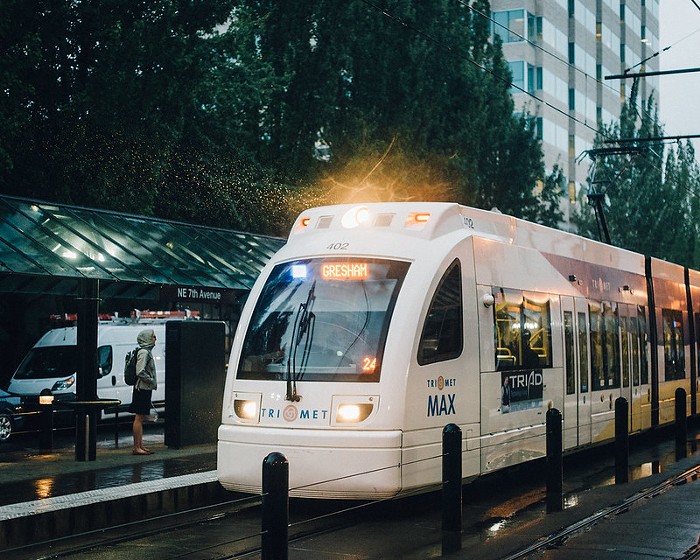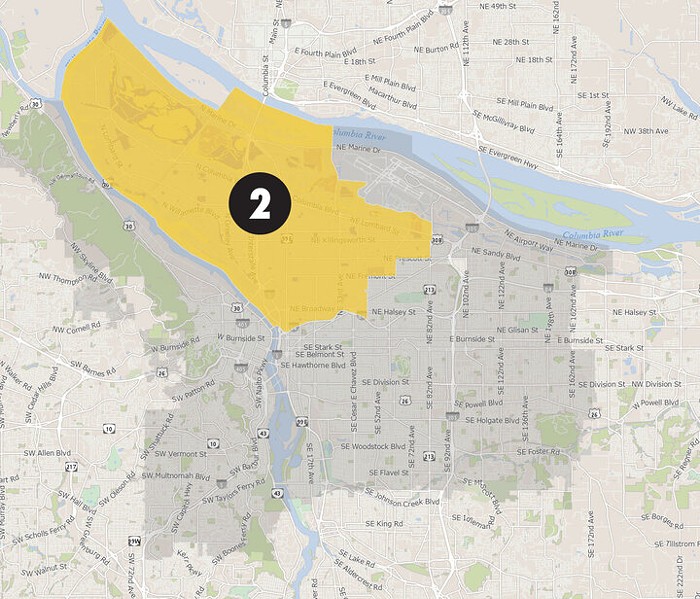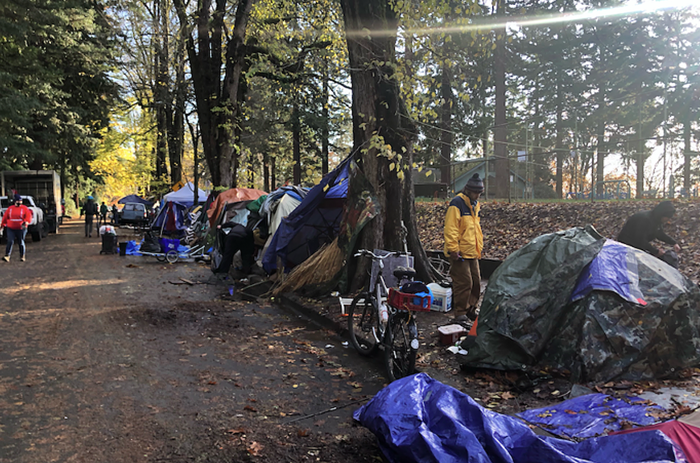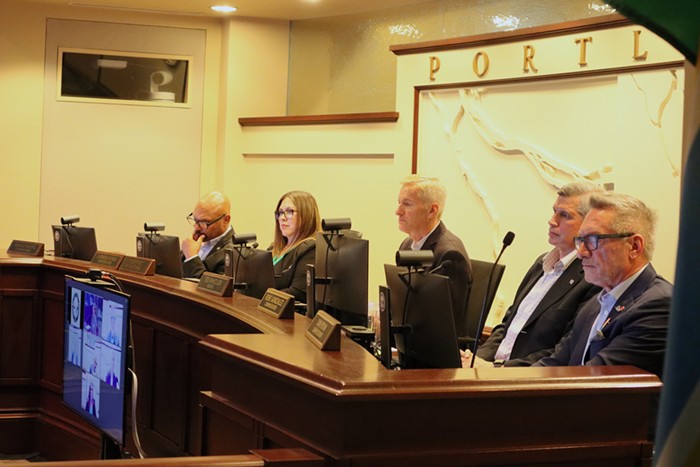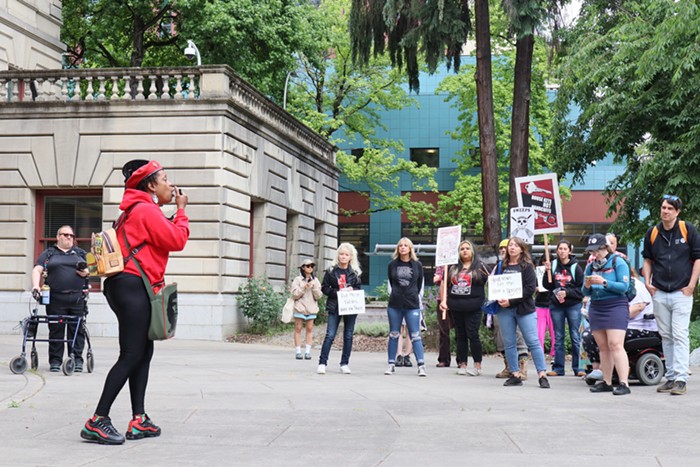SIX MONTHS AFTER Mayor Sam Adams led city council in voting for the largest, most expensive possible option for replacing the I-5 bridge to Vancouver—a $4.2 billion bridge up to 12 lanes wide—Adams is back where his green allies want him. Last Friday, September 18, the mayor officially rescinded his support for a 12-lane Columbia River Crossing (CRC).
"I think every aspect of this bridge has to shrink, including the number of lanes," says Adams, who thinks the bridge should be between six to eight lanes rather than the previously planned 10 to 12. Adams explains his downsizing attitude as a response to "significant change in the fiscal and political context on this project" since he signed off on it in late February.
A delegation from Adams' office went to Washington, DC, in April to ask about getting $400 million in federal funding to support the cost of the bridge. "But the message we've gotten is that the project is far too expensive," says Catherine Ciarlo, Adams' transportation director.
The mayor primarily cited the protests of anti-toll Vancouverites in his decision to advocate for a smaller bridge last week. Lowering the cost of the project could lower the price of tolls on the new bridge and minimize the anti-toll debate now overshadowing the Vancouver mayor's race ["Political Tolls," News, Sept 17].
"I do not get involved in [Vancouver's] internal politics," says Adams. "But I want them to know that their partner south of the river will not support a project without tolls."
Local groups fighting the controversial design view Adams' policy shift as a big victory.
"Adams has a major impact," says Mara Gross of Coalition for a Livable Future, which argues that the 12-lane bridge will increase sprawl, car travel, and air pollution. "This will force us to have an actual conversation about what we can afford and what is good for the region and the environment."
"I'm glad he's come to his senses," agrees Portland Transport blogger and transportation activist Chris Smith.
Though city council has already had its say on the bridge as a group, Adams personally sits on the CRC Project Sponsors Council—a group of Oregon and Washington bigwigs who oversee the bridge's design. While other members of the project sponsors council say they are still undecided on how big the bridge should be, co-member and Metro Council President David Bragdon has been forthright with his criticism.
"I've always been very skeptical of the 12 lanes, which I think was an overreach by Oregon and Washington's state highway departments which live in the 1950s," says Bragdon. "The design was based on very, very questionable demand figures which they manipulated to promote the biggest possible bridge and then ran a big propaganda effort for."
Oregon and Washington have so far collectively spent over $131 million on planning the bridge, in the past year focusing exclusively on the 12-lane option. But both the Oregon Department of Transportation (ODOT) and Washington State Department of Transportation disagree with Bragdon's characterization of the process.
"We're not trying to rig this. We are revisiting the bridge: what it looks like, how it operates, how much it costs," says ODOT's Matt Garrett, who also sits on the project sponsors council with Adams and Bragdon and says it is now possible that the number of lanes on the bridge could be cut. "Big, noisy, healthy conversations still need to take place, but I think that's good. And that's what Oregonians and Washingtonians want," he says.
Oregon politicians demanded more discussion on the bridge in early September, when three state representatives penned an Oregonian editorial titled, "Where's the Debate?"
State Representative Brian Clem, who wrote the piece along with Portland Democrat Jules Kopel Bailey and Ontario Republican Cliff Bentz, says he felt "railroaded" by bridge backers after Governor Ted Kulongoski added $30 million for the CRC's ongoing design back into his transportation package after the legislature's transportation committee had decided to cut it. "I think there's been an almost by design maneuvering to get this thing done without having a public debate in the legislature," says Clem.
The CRC is now aiming to hammer out a financial plan this winter. Check blogtown.portlandmercury.com for updates.




